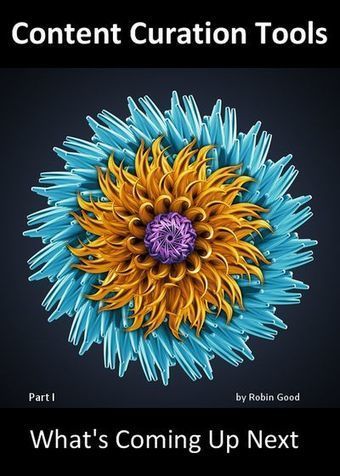Excerpt from article written and curated by Robin Good and first published on MasterNewMedia:
"Content curation tools are in their infancy. Nonetheless you see so many of them around, there are more new curation tools coming your way soon, with lots of new features and options.
Enormous progress has been made since the early days of the first news curation tools to what is available today, but yet, I feel we have only barely scratched the surface.
To illustrate what I expect to see on this front, here is a panoramic tour of the traits, features, patterns and trends that I expect will characterize the future of digital content curation tools, organized into specific feature areas.
1) Display Formats of Curated Content Collections
The first area in which I expect to see lots of improvement and innovative ideas is the one of how a curated collection or stream can be displayed to the user.
This is one of the most underestimated and underutilized areas of improvement for content curation tools.
2) Slicing and Dicing
Some of the present-day content curation tools, including Scoop.it, Spundge and several others, do allow you to tag and filter content but none provides a direct facility to easily create sub-sets that gather together collection items with the same characteristics.
3) Micro - Macro
One other badly needed feature, that I hope will see its way in some of the leading content curation tools, is the ability to instantly switch from a bird’s eye view of a topic to the detailed view of a specific information item.
4) Recurate
Another area that offers great opportunities for innovation and for the introduction of new useful features is the one covering the ability to assess, managing inventories, organize and curate one’s own existing assets.
5) News Discovery
The main problem with news discovery arises from the fact that quality filters and algorithms capable of both fully understanding the topic of interest, not just by way of a keyword or a hashtag but by semantic inference, and capable of identifying the relevant sources among so many noise-making content marketers reposting other people stuff, are not easy to build.
The best way to uncover, identify and identify new quality sources and content items may be to employ a balanced mix of automated search filters augmented by human curators that can supervise, edit, refine and improve on what is gathered by the algos.
6) Ownership
The main benefit offered by content curation platforms that require you to curate and publish first via their systems (Scoop.it, Pinterest, etc.) is that they provide you with an existing broad audience readily interested in your content. For someone just starting out online, this can be a huge booster.
The con side of the equation is that your rights on what you have curated as well as the physical ownership of that content is not under your control anymore. And for those already having good visibility and reputation online, this may not be the most attractive proposition.
7) Credit and Attribution
For professional curators the need to properly and systematically credit and attribute the content and sources utilized is not a secondary matter. Discovery of new interesting content is at the heart of the curator job, and facilitating the exchange on meta-data that provides credit and hints as to who has been of help in discovering something will increasingly be a highly valued activity..."
Each point is analyzed with more information and external links. Read full, interesting and detailed article here:
http://www.masternewmedia.org/content-curation-tools-future-part1/
Via Giuseppe Mauriello



 Your new post is loading...
Your new post is loading...








Thanks!
Scooping this to basically reference it for more tips on curating. We are all works in progress.
With billions of people connected through social media and directly connected with email traditional curators of news and other content have had their business models destroyed but it has not surprisingly taken many years for better models to emerge.
The widsom of crowds is well known but so is their stupidity (stock market crashes, group think, lowest common denominator in election outcomes...). Better curating tools and systems are beginning to show that valuable curators of the worlds content are able to find their audience and enrich the world with deep insight that replace the extremely low numbers of curators of the past (news paper barons).
Some of these curators will be paid and others do it just for the joy of it. Collectively they will reshape thinking and ultimately the world.